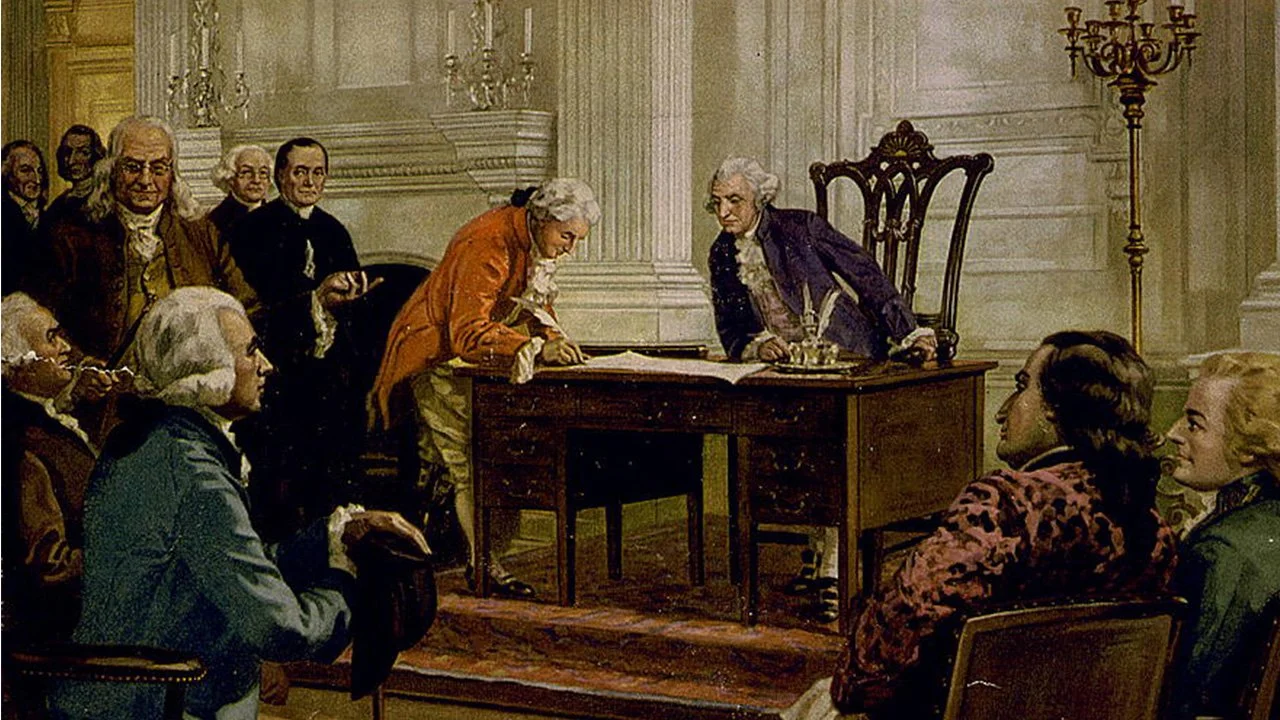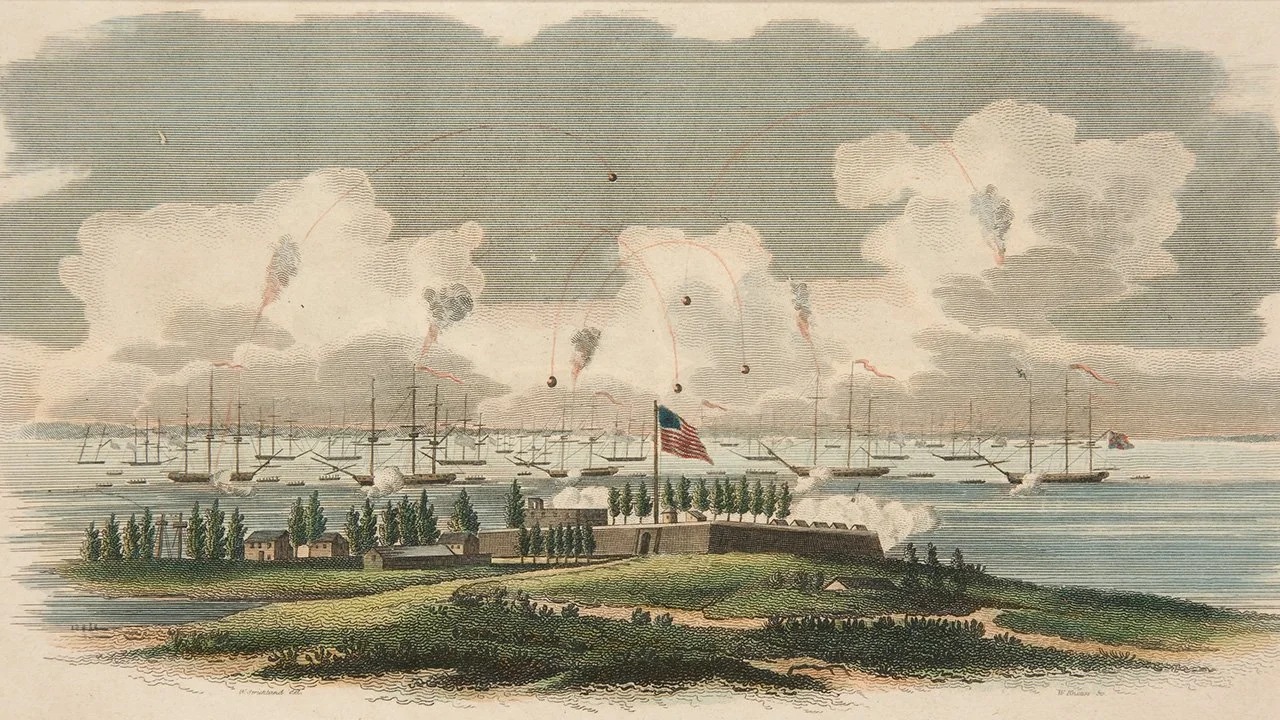Ben Franklin Becomes America’s Top Diplomat
America declared its independence from England on July 4, 1776, but our leaders knew that success would depend on securing the assistance of France, England’s eternal enemy. In December 1776, Congress sent Ben Franklin to Paris to negotiate with the French. Although Franklin was seventy years old and in poor health, he willingly accepted the post as he was now fully committed to the American cause.
Ben Franklin Works Towards Independence
In the decade preceding the American Revolution, Ben Franklin worked to reconcile differences between England and her American colonies. Franklin’s position began to change after John Dickinson published a series of articles entitled Letters from a Farmer in Pennsylvania. Disillusioned with King George’s policies, Franklin left England for America in March 1775. After arriving home, Pennsylvania chose Franklin as a delegate to the Second Continental Congress, then convening in Philadelphia.
Benjamin Franklin Enters Politics
Ben Franklin became a member of the Philadelphia City Council in 1748, beginning more than four decades in American politics. As deputy postmaster-general, he began to consider the colonies as one entity instead of thirteen individual parts, and even proposed a plan of union at the Albany Congress in 1754.
Virginia’s House of Burgesses
In 1619, the Colony of Virginia created a General Assembly, which included 22 men called burgesses. These men had been elected by Virginia’s eligible voters, making the House of Burgesses the first representative legislature in British America. In the years leading to the American Revolution, as Parliament introduced more burdensome legislation, the House of Burgesses was at the forefront of colonial opposition and had an outsized influence on the founding of our great nation.
How the Colonies Were Governed
The colonies of British America were not created in the same mold, but rather were governed under three different systems: royal, self-governing and proprietary. The different systems of colonial government created diverse attitudes towards English rule and our independence.
Ben Franklin, America’s First Man of Science
Ben Franklin was one of the world’s foremost inventors and scientists, using his creative genius for the betterment of mankind. His most famous discovery came in the field of electricity, which became his all-consuming passion. Amazingly, Franklin refused to patent any of his inventions as he felt they should be shared.
Ben Franklin Improves Life for His Fellow Citizens
Ben Franklin devoted much of his life to the betterment of mankind. He notably did this in the areas of science and politics, but he also worked to improve his local community.
Ben Franklin’s Writing Enlightens and Entertains America
Ben Franklin wrote two of the greatest treasures of American literature, Poor Richard’s Almanack and his autobiography. Through both, readers had a chance to see the world from the perspective of one of the most talented men America has ever produced.
The Great Seal of the United States
The work to create our Great Seal began on July 4, 1776, when Congress formed a committee including Benjamin Franklin, John Adams, and Thomas Jefferson to design an official seal for our new country. It took three committees and Charles Thompson, secretary of Congress, six years to come up with the final design!
Ben Franklin, British America’s Most Successful Printer
Ben Franklin got his first taste of the printing business in 1718 when he turned twelve and entered an apprenticeship at his brother’s Boston newspaper, The New-England Courant. He would eventually own eight of the fifteen newspapers in the American colonies, making him one of the richest men in America.
The History of America's Flag
The American flag was born on June 14, 1777, when Congress passed the original Flag Act which read, “Resolved, That the flag of the thirteen United States be thirteen stripes, alternating red and white, that the union be thirteen stars, white in a blue field, representing a new constellation.”
Ben Franklin, An Extraordinary Man from Humble Beginnings
Ben Franklin was one of the most extraordinary men America has ever produced. Born in Boston on January 17, 1706, to a soap and candle maker who emigrated to America in 1683, Franklin had only two years of formal schooling before going to work for his father. After a few years, he went to work as an apprentice printer for his older brother James who owned a newspaper called The New-England Courant. That job would spark an interest that led to a prosperous career in printing.
Loyalists Pay Heavy Price During Revolution
During the American Revolution, roughly one quarter of colonists did not want to separate from England. From their perspective, life in the English colonies of North America was relatively good. They believed in their rights as deeply as the most devoted Patriot, but rebelling against their king was a line they would not cross.
Patriots, Loyalists and America’s First Civil War
The debate over declaring the colonies’ independence from England was intense and emotional. Those who felt we should remain loyal to the King believed just as deeply as those who thought we must go our own way. There was no middle ground and Americans were forced by extremists to choose a side.
Americans Divide Over Independence
In some ways, the American Revolution was the most bitter event in our nation’s history. While the Civil War split the nation in two, it was a conflict between two regions of the country, the slave holding south and the northern free states. In contrast, our Revolution was a more personal civil war, fought locally, often with neighbors fighting neighbors.
The Quasi-War and Its Aftermath
In 1798, calls for war with France were rising and there was concern about a possible French invasion. The existing US Army comprised about 3,000 men, not nearly adequate to defend our borders. Congress reluctantly agreed to create a 10,000 soldier “provisional” force and President John Adams nominated George Washington to lead it. Despite being unprepared at the outset of the Quasi-War, the United States quickly responded and acquitted itself well.
Escalating Tensions with France Lead to Quasi-War
The Quasi-War was an undeclared war between France and the United States, fought in the Caribbean and along the southern coast of America, between 1798 and 1800. President John Adams, wanting to maintain our neutrality, refused to declare war but recognized the need to rebuild our navy, which had been disbanded after the American Revolution.
Relations with France Fall Apart
America’s first armed conflict after the American Revolution was a mostly forgotten fight with France called the Quasi-War and was the culmination of a series of disagreements with our former ally.























